It’s no secret that the rise of sports cars in the 50s and 60s came about because of racing. One could watch a Ferrari 250 GTO race at Le Mans on a Sunday, then go into their local dealership and buy one on Monday. That was, in fact, the entire reason that Enzo Ferrari made street-legal cars at all, to fund his racing programs across Formula One and Endurance series races. Aston Martin did the same, as did Jaguar and, under several different ownership groups, Alfa Romeo.
When the modern supercar first appeared in the 1970s, it was again racing that drove development and pushed the boundaries of what could be driven on the street. It wasn’t until Lamborghini that a manufacturer looked to the street first, and then to the racetrack—and in doing so, he successfully ruffled the feathers of his rival, Mr. Ferrari. 50 years on, however, technologies developed for the race track are still impacting and influencing the design of today’s supercars.
Porsche’s latest 911 Turbo, for example, uses a transmission that was refined and perfected on the racetrack. The 911 GT3 even uses the same intake plenums as the GT3-R World Endurance Championship race car. Aston Martin’s latest V8 Vantage incorporates suspension geometry that is lifted almost directly off the Vantage GT3 from the International GT Championship. Of course, Ferrari, in the style of their late founder, has quickly moved racing tech to the streets at breakneck speed.
A Case Study: The 2021 Ferrari SF90 Stradale
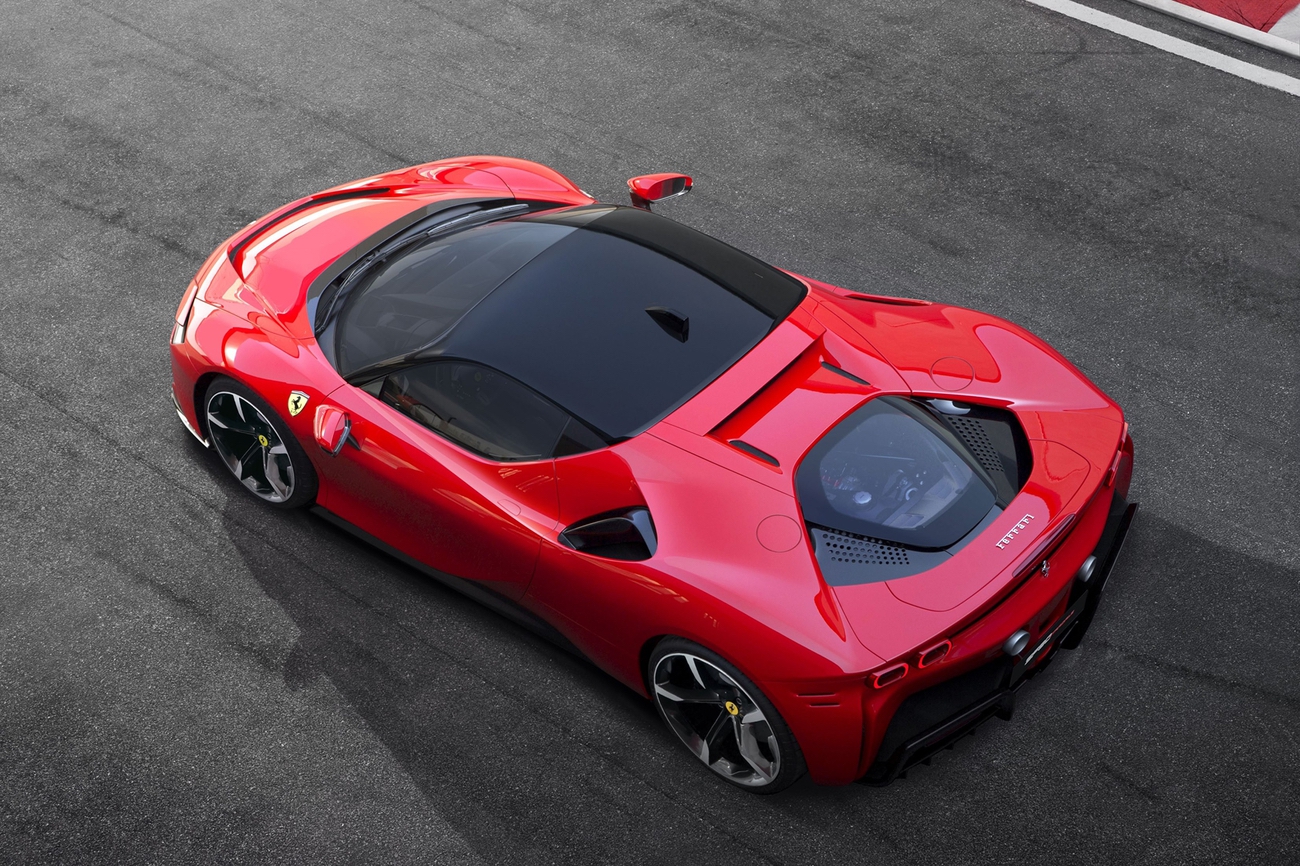

The Formula One turbo-hybrid V6 era arrived in 2014, which left many teams in the series having to design entirely new ways of producing enough power from their engines with two cylinders lopped off, a whacking great turbo bolted on, and a complex, multiple stage hybrid system attached. It’s no wonder that a lot of teams struggled with reliability in 2014, yet it provided the impetus for the engine suppliers to work overtime to bring about new ideas.
A Racing Technology Project
The trickle-down effect of the turbo-hybrid era is exemplified in the 2021 Ferrari SF90 Stradale. It’s no secret that the first car of the turbo-hybrid era from the prancing horse, the SF14-T, was a disappointment. The “simple” KERS (Kinetic Energy Recovery System) was replaced by ERS (Energy Recovery System) as mandated by the FIA regulations for the new era.
This ERS was charged in two ways, through the MGU-K (Motor Generator Unit – Kinetic) and the MGU-H (Motor Generator Unit – Heat), which helped the rear brakes and captured spin-down energy from the turbo, respectively. As you can probably figure out by now, this was not an easy switch.
But through all the strife, research, development, and testing done in 2014, and with the 950 HP Ferrari LaFerrari in production, there were a bunch of engineers sitting around waiting for their next project. Into their laps was dropped a project simply codenamed SF90. The design objective was to take the ideas of the recently launched Ferrari 488 with its V8 turbo and implement as much technology as possible, mirroring the use of hybrid power (as with the LaFerrari) to boost performance to hypercar levels.
The first consideration that was looked at was how to deliver the same power from the car as the LaFerrari, but using a V8 turbo with hybrid power, instead of the massive V12. This is where the F1 team became crucial, with real-world data from a turbo hybrid—specifically in one area that the engineers had never thought to boost power from: the fuel injectors.
Reworked Fuel Injectors
Formula One engines are run at such tight tolerances that you actually cannot cold start one, and at over a million bucks a pop, you probably wouldn’t want to. Instead, the engines have to be preheated and slowly brought up to starting temperature. Part of this is because the fuel rail and fuel injectors are brought up to over 6,000 PSI, so that when the fuel starts to flow, it won’t stutter or stall out, possibly causing a cylinder to misfire from fuel starvation.
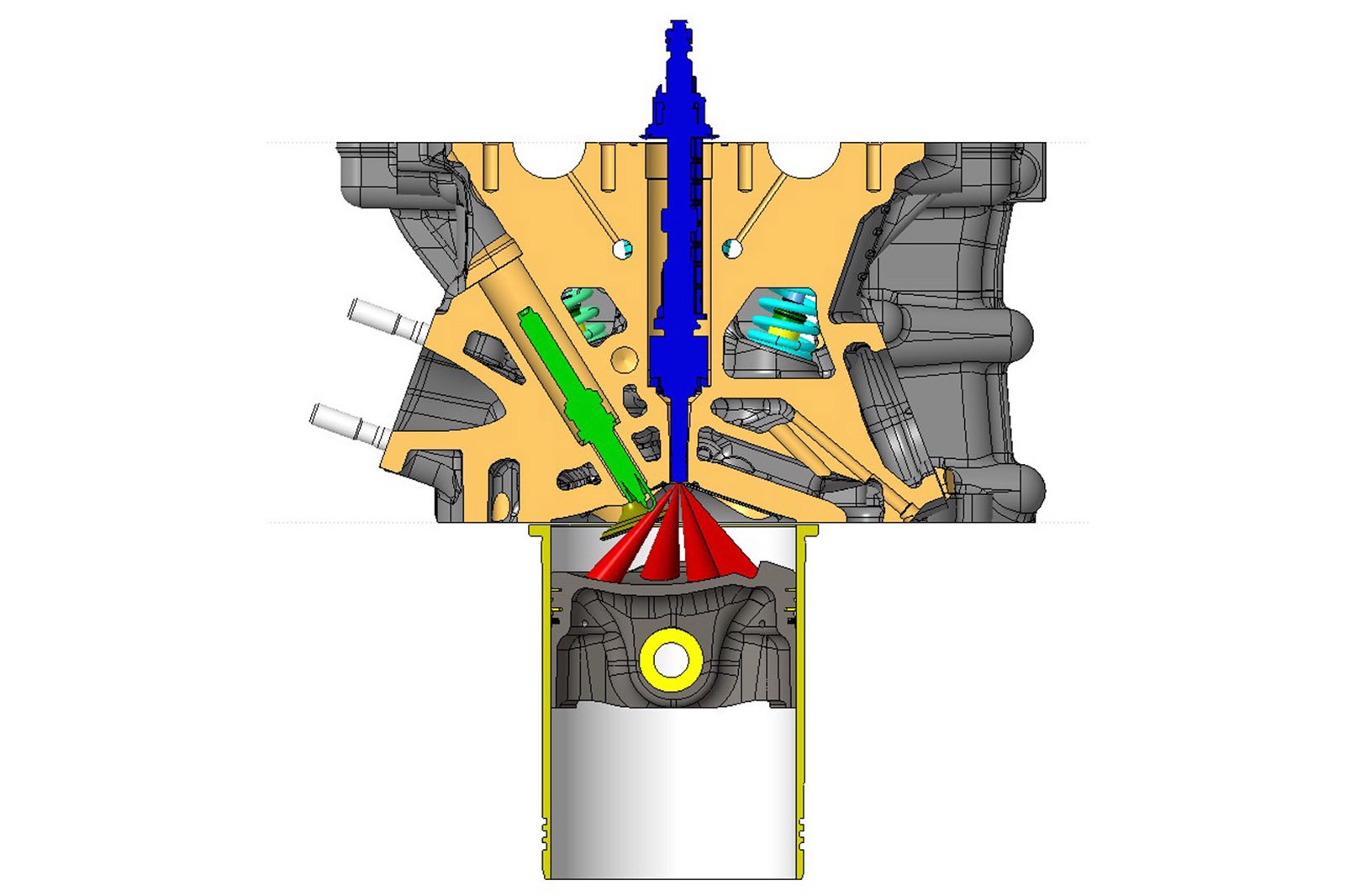

Taking this idea to the Tipo F154 V8 engine from the 488, the fuel injection system was reworked so that the fuel rail, and specifically the injectors, would start to pressurize the moment you unlocked the car with the remote. You can actually hear this in some videos of owners filming their cars, where you can hear a tiny whirring noise of the fuel pump pressurizing the fuel. Once fired up, and at operating temperature, the fuel is injected in what is called a center port direct injection, meaning that the injector is directly in the top of each cylinder at 350 bar (or 5,100 PSI). This results in a very even fuel vaporization across the entire cylinder, which helps boost the regular 710 HP of the Tipo F154 to nearly 770 HP.
Hybrid Power Assistance & Energy Recovery
That is not the only racing technology to make it into the SF90 Stradale, either. While the car is a hybrid, it has a high-capacitive 7.9 kWh lithium-ion battery slung slow and forward, just behind the cockpit firewall, that mixes technology from KERS and the MGU-K idea that replaced it. The SF90 has a large electric motor mounted to its transaxle at the rear, much like F1 cars do, and that motor, when not providing power, is always active recovering energy—even if it’s a low voltage from letting the coil inside freely spin. It thereby mimics the MGU-K ERS.
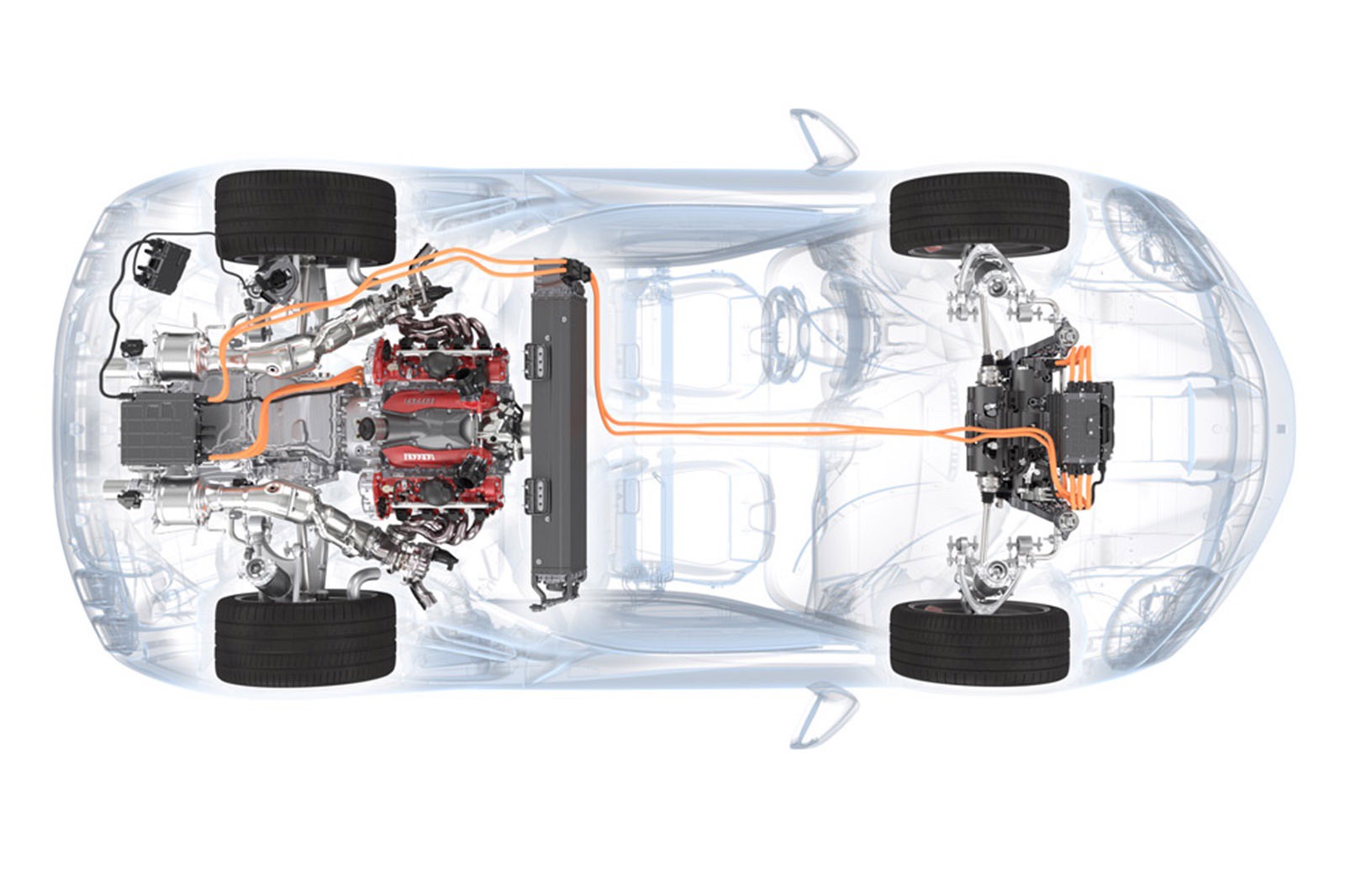

However, the front wheels are powered by an electric motor each, and they are the part of the car that is similar to KERS, in that the actual braking done to each wheel is a combination of traditional friction brakes and the electric motor providing resistance. When in hybrid deployment mode, all three electric motors provide a combined 217 HP. Add in the V8 at full pressure and on the wide-open throttle, and you have a car that exceeds the power of the LaFerrari.
Racing Aerodynamics
In the “way back” period of Formula One, a radical idea was discovered that allowed the cars of the late 1970s and early 1980s to have amazing aerodynamic efficiency and literally get sucked down onto the road instead of relying on purely over-body aerodynamics. That era was known as the Ground Effects era. In a slightly ironic twist, the new 2022 FIA F1 regulations have had the cars return to using ground effects to promote closer racing!
That is one of the reasons that starting in the mid-2000s and through to 2021, the cars in Formula One grew more and more little aerodynamic ducts, diverters, winglets, and front and rear wing styles—as the only ground effect allowed to be used was the Venturi Effect, which creates a low-pressure vortex from under the car towards the rear to help the high-pressure air over the wings push the car to the road.
However, since a road car (“stradale” is literally “street” or “road” in Italian) is not bound by FIA regulations, the SF90 Stradale takes advantage of every last bit of data that Ferrari has ever gathered regarding both over-body and under-body aerodynamics.
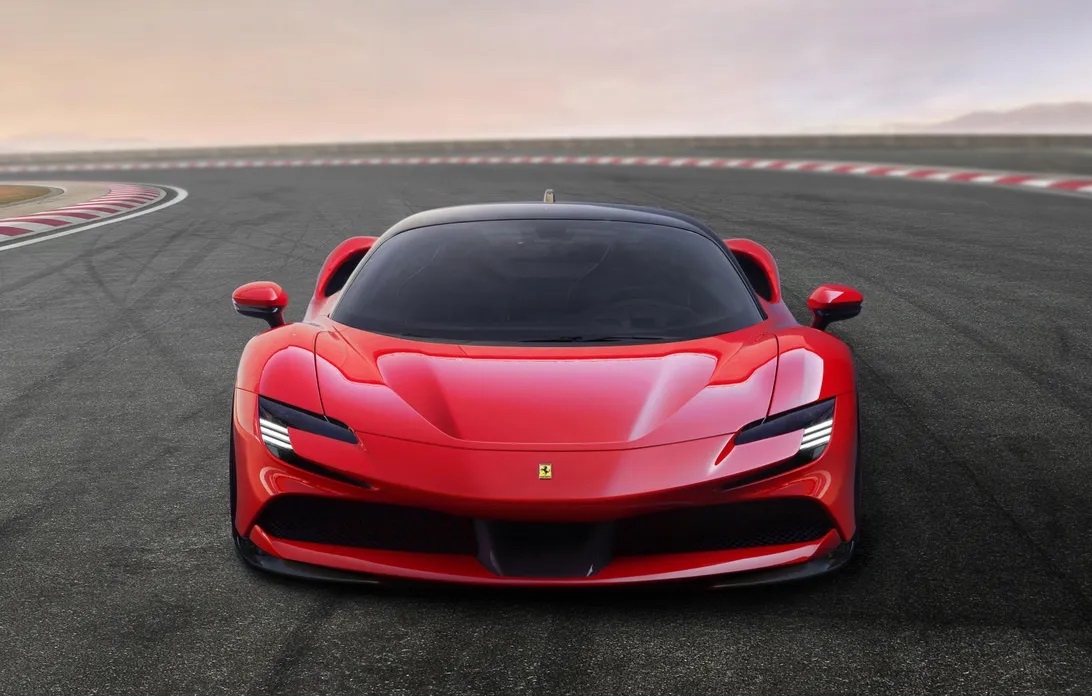

The first part of those aerodynamics are a pair of vortex generators in the front cooling intakes, which spins the air before it is directed under the car. Much like the 2022 Formula One cars, these vortex generators are there to create an “air skirt” under the floor of the car, keeping the airflow between the wheels in a steady controlled space.
Because of how the air gets pushed under the car and then rises up through a pair of Venturi tunnels, the SF90 has, in a matter of fact, a much weaker version of the same ground effects aerodynamics that the race car has.
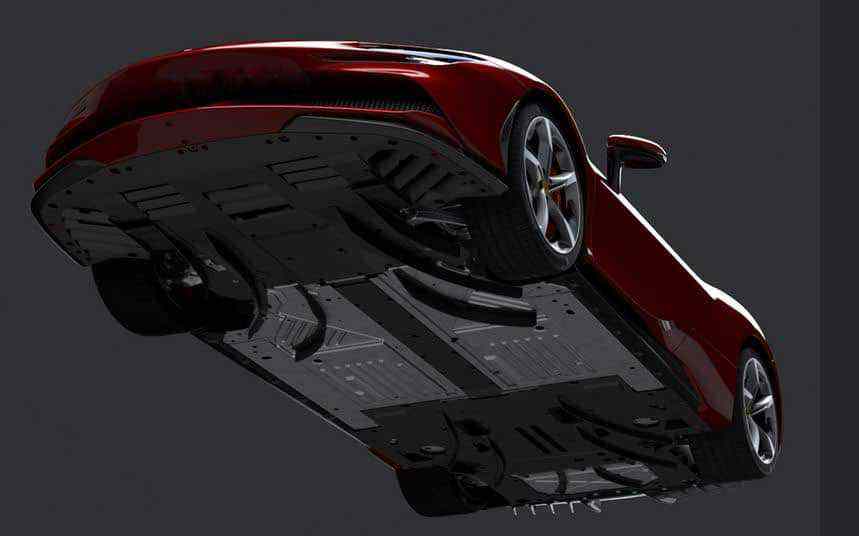

Underneath the car, as you can see in the above image, there are also what are known in the racing industry as “barge boards”. These are, in effect, aerodynamic vanes that “barge” the air out of areas where you want to have smooth, clean flow over or through them.
These were prevalent in Formula One through most of the past two decades, and it is only in the 2022 regulations that the boards, and their ability to generate massive vortices of air for the car to slip under, have been banned. Once again, since the SF90 Stradale isn’t bound by FIA regulations, there are barge boards aplenty!
Lastly, as the air under and over the body reaches the rear, there are two separate aerodynamic surfaces that have been implemented from Formula One and GT3 racing. The first of these is a tail lip spoiler that has a moveable inner surface, hydraulically operated automatically by the onboard computers.
This inner “wing,” if it can be classed as such, is part of the Drag Reduction System, which is known in F1 as DRS. This allows the over-body air to either come off the spoiler at a high angle, generating downforce for cornering—or to slip under the rear spoiler, maximizing straight-line speed.
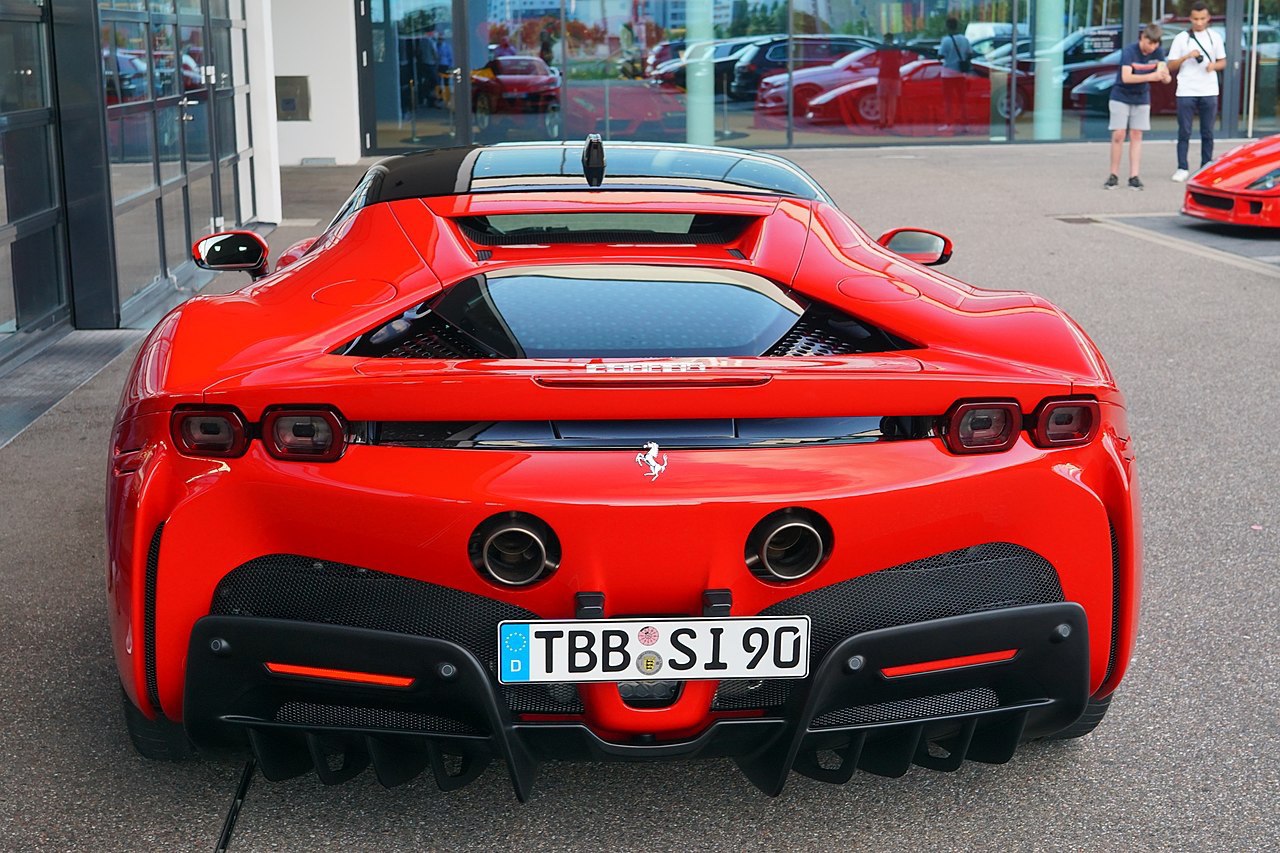

The other bit of motorsports-derived aerodynamics is via the two Venturi tunnels that flank the lower rear fog light of the S90’s rear bumper. These tunnels are part of what creates underbody downforce, as a car piercing the air will compress the air underneath it, especially with vortex generators and barge boards creating a central stream of clean, high-pressure air.
Without going into the physics of it too much, as that high-pressure air is quickly but gradually released, it creates an area of low pressure, which literally sucks the back of the car down onto the road from all the high-pressure air that passes over the top of the car.
All in all, by borrowing high-pressure fuel delivery, center-point injection, KERS and MGU-K ERS hybrid systems, over and underbody aerodynamic flow shaping, and more power than the hypercar that came before it, the Ferrari SF90 Stradale is a motorsports tour-de-force for the discerning client. Of course, that client is the kind that will likely be able to rent a racetrack for a private day because of the SF90’s bank-account-draining base cost (and you can’t buy one anymore) of over $507,000.
With options, these hypercars easily punch through $700,00 to $900,000—and although they are series production cars, they are expected to only sell a few hundred a year, if that, across both the Berlinetta and Spider models.
What Other Racing Technologies Are Likely to Trickle Down Next?
Power Units
We, as motorsports enthusiasts, supercar enthusiasts, and basically anything-with-four-wheels enthusiasts, are right now witnessing an amazing point in supercar and hypercar history. We are standing at the very crux of four entirely different ideas about the future of the sports, super, and hypercars, and each and every idea was born from motorsport.
Electric Power (Battery)
The first of these ideas—electric vehicles positioned not to be commuter cars but the absolute pinnacle of what electric vehicles can be—was born hand in hand with the thought of having electric-only motorsports. This idea was very heavily researched by several major manufacturers around the world, as well as the biggest names in motorsport, such as the FIA and the ACO.
What resulted is that in 2014, a new series of single-seater racing was launched—officially the FIA ABB Formula E World Championship. Using motors and batteries specifically designed for long-duration high-performance use, the series started off with fanfare and has not looked back since.
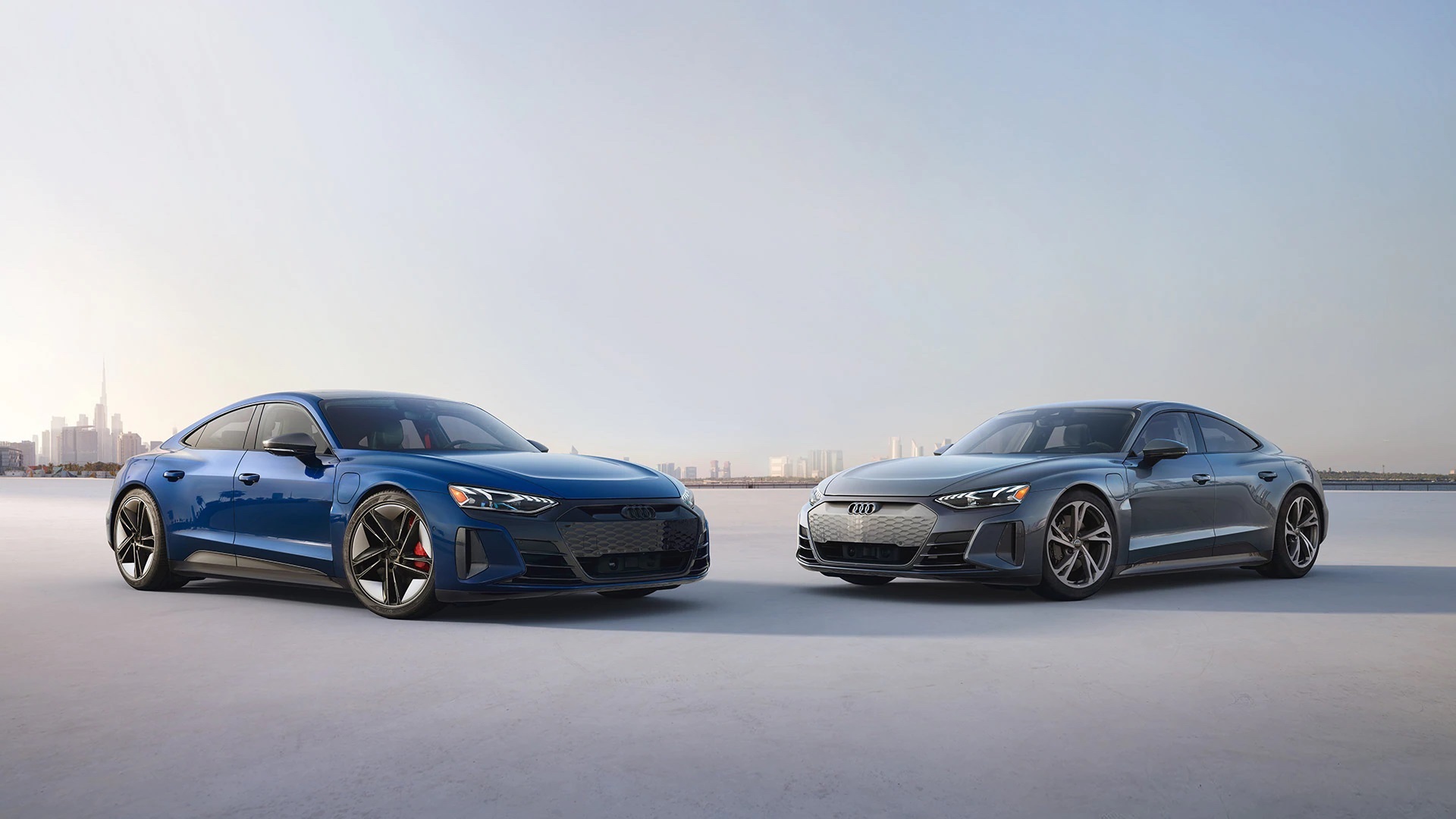

We mentioned that there were major manufacturers involved, because as a direct result of participating in Formula E with the FIA, and the 24 Hours of LeMans with the ACO, Volkswagen Group, specifically Audi, began a project to phase out all of their pure gas-powered vehicles by 2022 to 2024, have 80% of their range be electric-only by 2030, and be fully sustainable, renewable, and carbon neutral by 2035.
The first car that has those high-performance, long-duration motors and batteries? The replacement for the venerable R8 V10, the Audi e-Tron GT.
Performance Hybrids Tied In With Sustainable Fuels (Biofuel)
The second idea, performance hybrids, have been around for a while in supercars—but with the Holy Trinity of Hypercars in 2013 and 2014, and cars such as the SF90 Stradale discussed above, we are at a point where a technology originally developed to lower fuel consumption, and which was seen as sluggish and annoying, is moving some of the most powerful supercars and hypercars… ever.
Going hand in hand with high-performance hybrids is the third idea, one that Porsche in particular, another VW Group company, is pursuing with great interest. That idea is sustainable fuels, or as they are more commonly known as, biofuels.
At this very moment, top fuel companies such as Shell and Elf are deep in the development of biofuels to power the pinnacle of motorsports, Formula One. One of the regulations for 2022 was that all teams had to use fuels that contained 10% or more content-per-volume biofuel in the racing juice.
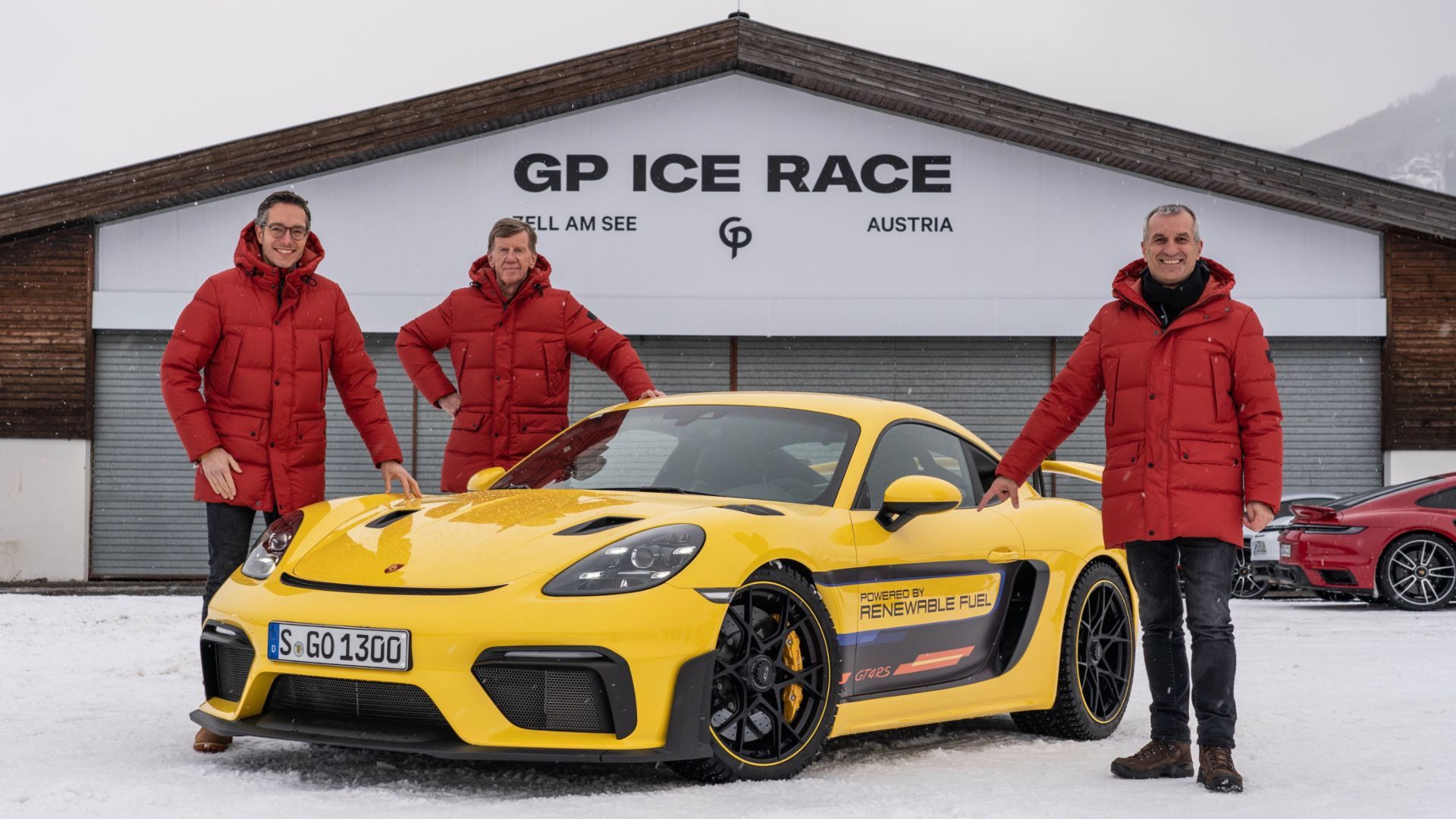

The reason that Porsche is so heavily into the research of sustainable fuel is that while they are, like their cousins Audi, going mostly electric, there is something about a Porsche with a combustion engine that is just… right. You don’t stick to the same basic design for nearly 70 years, building up a reputation all that time, to simply throw it away.
Having an engine out the back, barking and growling with power, or purring along in a cruise, is just something so innately “Porsche” that it only makes sense to research how to keep that part of the company identity alive without killing the atmosphere.
Electric Power (Hydrogen)
The final idea is one that saw a burst of interest in the early 2010s, and then disappeared for a while until interest in it was recently renewed—hydrogen as fuel. It’s sustainable, as it is one of the most common elements in the entire universe. It packs a ton of energy in a small molecule, and interacts readily with oxygen. It powered moon missions, space shuttles, and recently, two cars—a Honda and a Toyota—that were sold only in California.
It is gaining renewed interest in competition, however, as l’Automobile Club du Ouest (the ACO) recently invested heavily into a study of hydrogen as a viable racing fuel and power source. The result of that investment was the Mission H24 hypercar prototype, a revolutionary endurance car that combines four electric motors with a super-capacitor (not a battery pack) and an onboard hydrogen-oxygen catalyst fuel cell. The only noise that fuel makes when turned on is a mild hum, almost like a warp core if you’re a fan of Star Trek.
[embedded content]
[embedded content]
It charges the super-capacitor, and once it gives you a green light on the dash, you can go racing. The major advantage to hydrogen fuel cell power is that it is completely and utterly carbon neutral. The only emissions from the fuel cell are water and heat. That’s it. No hydrocarbons. No dangerous or toxic emissions. Just mildly warm water that you could fill a water bottle with and drink, as it is literally distilled water.
Car Shapes Influenced By Fluid Dynamics
Yes, your eyes probably went a little askew at that title, but it really isn’t as complicated as it sounds. Endurance racing events, such as the 12 Hours of Sebring, the 24 Hours of Daytona, and the “Great Race,” the 24 Hours of LeMans, always have a class of cars called the Prototype class.
These are often labeled as Daytona Prototype (24 Hours of Daytona), LMP1, 2, and 3 (LeMans Prototype) in the World Endurance Championship, and the newest prototype class, the LMH, or LeMans Hypercar.
What all of these prototype classes have, however, are cars that are designed so that every single spare inch of surface area on them is influencing the air somehow. It could be shaping it towards an intake, creating a low-pressure zone in a wheel well to reduce wheel drag, or flowing off a wing to shove the car into the road.
With the new Hypercar prototype class, however, some manufacturers have used computer-aided fluid dynamics (CFD) simulations to look for new solutions to aerodynamic challenges.
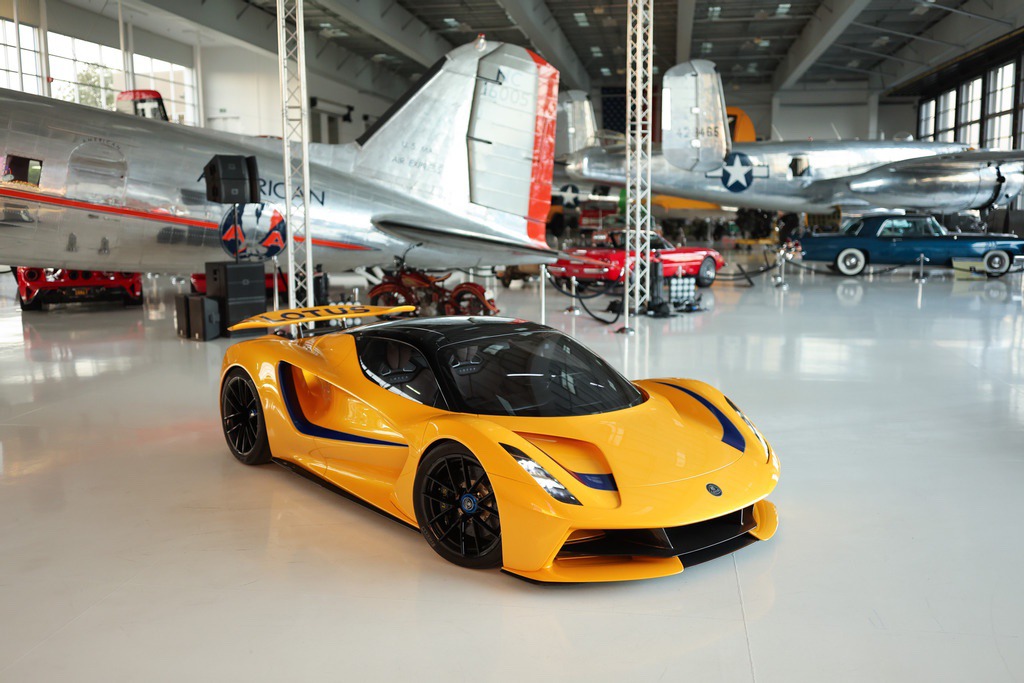

Before they decided not to join the new Hypercar class and instead refocus their energy on building the world’s most powerful electric hypercar, Lotus was investigating the use of Venturi tunnels not under a car, but through a car, for their greatest car yet, the Lotus Evija EV.
Using CFD on a variety of shapes, they found that they could almost entirely eliminate the vortex that is generated behind almost all cars on the road. You’ve probably seen this in effect on a dusty semi-trailer—or if you live in a snowy area, on an SUV after a dry, light snowfall. You’ll be driving along and you’ll see the light particles get lifted into the airflow, only to be sucked straight down and tossed around violently by the sudden vortex of air rushing in behind the car or trailer to fill the low-pressure area there.
[embedded content]
[embedded content]
Having the air pass through two Venturi tunnels and flow upwards to meet the high-pressure air coming off the top of the car stops the vortex from forming as violently, and since there is no vacuum of space behind the car to pull back on it, the car has a staggering top speed of… well, officially, 200 MPH, but that’s Lotus being coy about how fast the Evija will actually go.
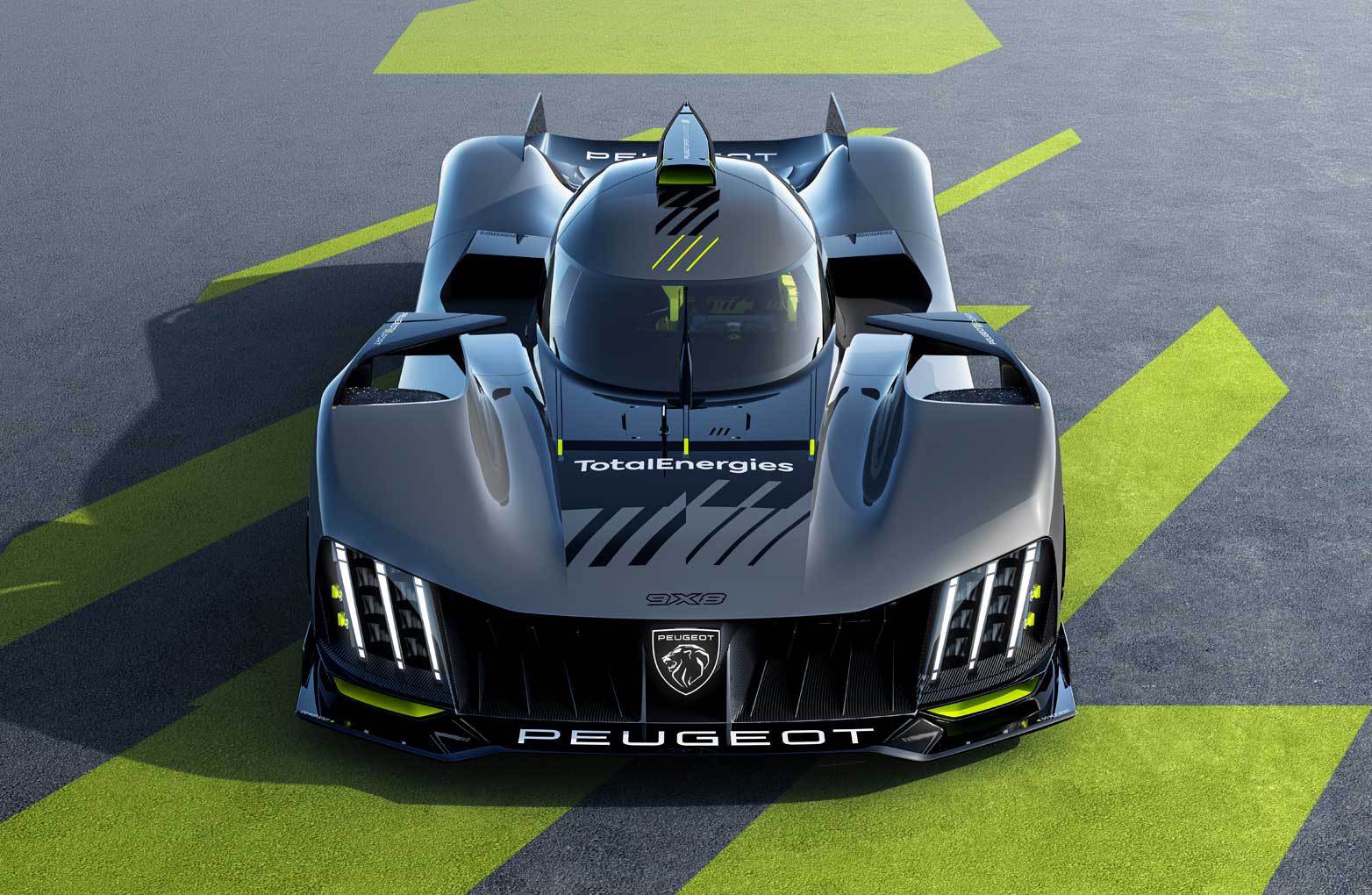

There is also a very interesting new hypercar prototype from Peugeot, however, known as the 9X8. The reason this car might influence the future of roadcar design is one simple feature that sets it apart from all other hypercars: it doesn’t have a rear wing. Instead, through thousands of hours of simulated running with CFD, the French mega manufacturer discovered that if they brought the tail of the car down to just above the exits of the massive Venturi tunnels at the back of the car, they could create what is known as an “air wing.”
As a result, the 9X8 is the first prototype that is designed almost entirely to use ground effects with minimal over-body air shaping, while directing the bulk of that over-body air towards the scalloped rear end and gently rising tail.
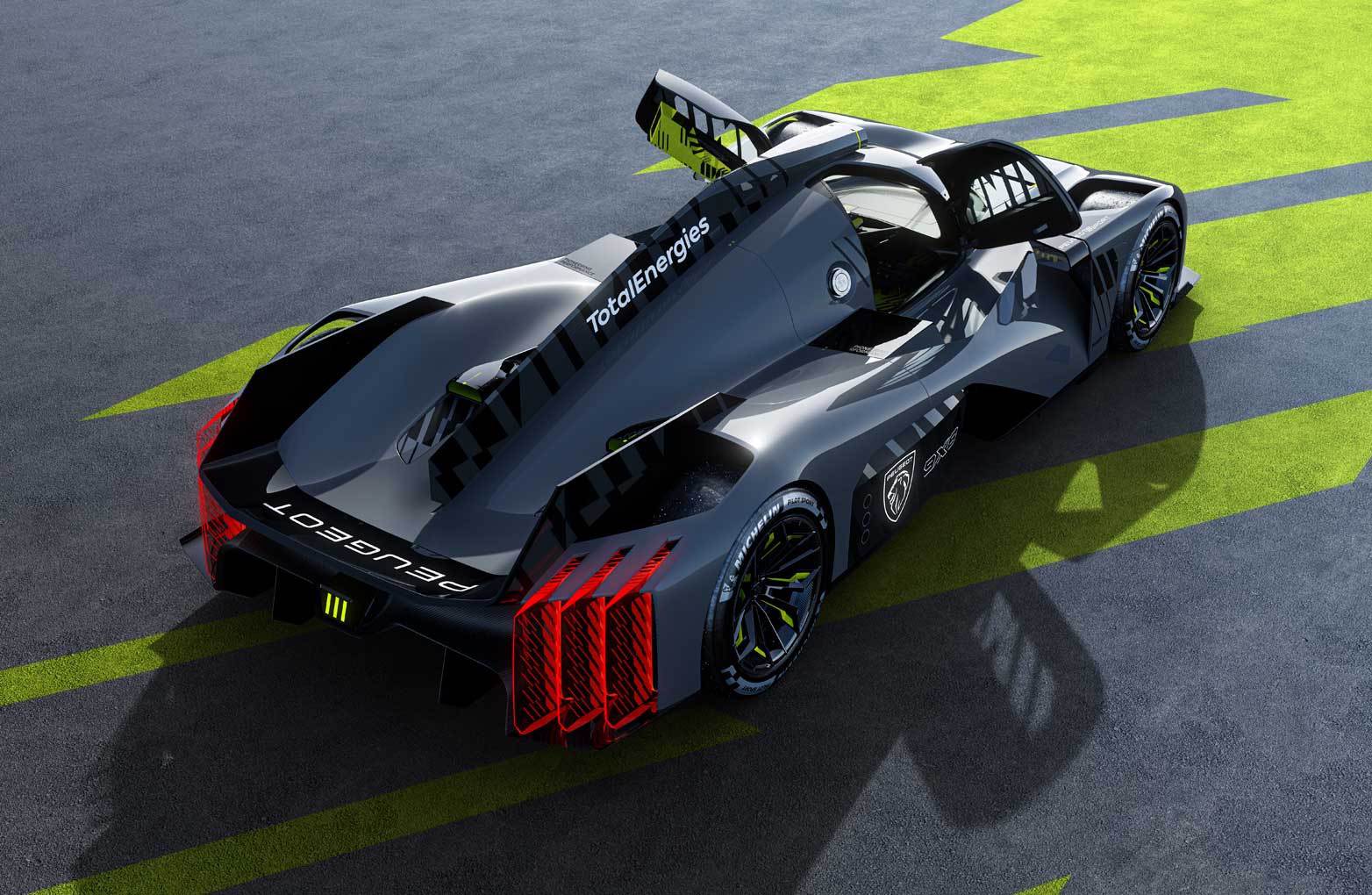

As the air plows over the rear of the car, it is met with rapidly expanding air from the Venturi tunnels, and through some mind-bogglingly complex physics, it is shaped precisely to send that high-pressure air over the low-pressure zone—exactly like a physical wing in the air would do. This “air wing” was of concern for the FIA and the ACO at first, but after a pretty bold (and non-press) demonstration of the car at full speed to officials from both sanctioning bodies, those concerns were put to rest.
With the rise of electric cars on the road, and the need to be as slippery and minimally intrusive into the air around it to get the highest efficiency, shaping an electric vehicle to use an air wing instead of, say, a shaped spoiler on the tail end of the car, could quite literally revolutionize how the cars of the future are shaped.
Bringing It All Together: Motorsports Regulations Looking to the Future
It took a long time, but some of the biggest sanctioning bodies for motorsports in the world have finally realized that unless they mandate changes in the regulations to allow for, and sometimes force, research into future-looking vehicles, a lot of manufacturers would be happy with the status quo. Not to drag their name through the mud, but this is already apparent in the first few races we’ve had in the 2022 Formula One season, of which Mercedes has dominated for nearly a decade.
They had the most money, the best facilities, the biggest research budget, and the like. With the 2022 regulations having a testing cost cap, only a certain amount of CFD and CAD hours allotted, and strictly regulated wind tunnel time, along with the fact that the way that Formula One cars now generate downforce has been a massive departure from the over-body style of the past 40 years, Mercedes has toppled off the peak of the mountain, and they now have a bit of a climb to get back up there.
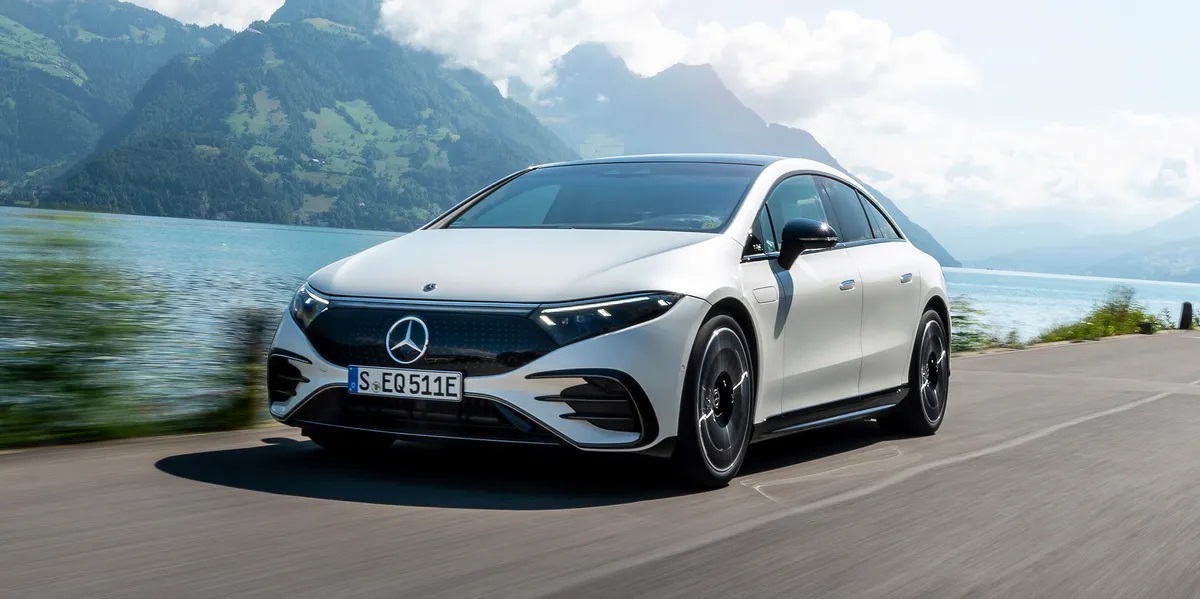

However, Mercedes is also participating in Formula E, the World Endurance Championship, and the new Extreme E exploration rally championship. They are competitive, and the benefits of their motorsports experience has already trickled down into the new Mercedes EQ line of electric vehicles—as well as their AMG department’s supercars and performance sports cars.
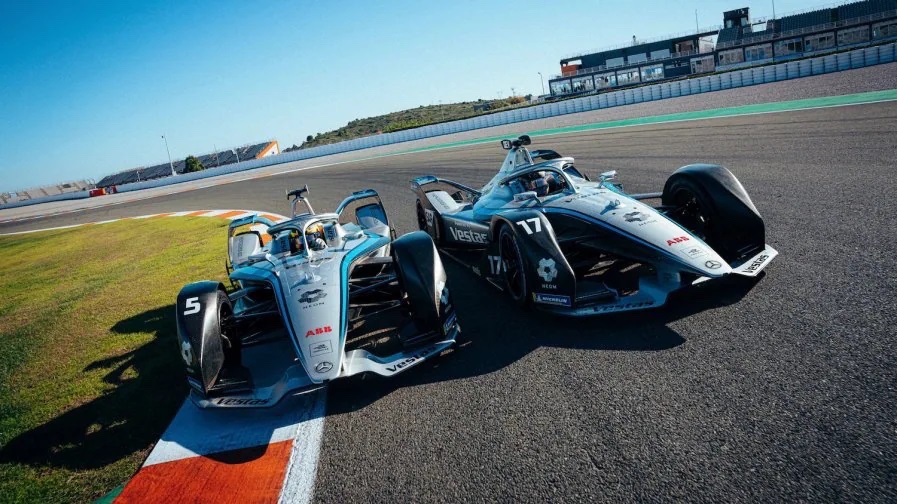

One of the biggest pushes that has been seen in 2022, so far at least, is alternative fuels and power generation—biofuel, hydrogen fuel cells, and even high-efficiency solar recharging for Formula E cars so that they don’t stress the local electrical grid. It’s all happening, right now, as you read this, in the motorsports world.
Electric charging stations have been popping up around Europe and North America at a prodigious rate, and almost all of them are intentionally drawing their power from wind, water, or solar. California has been investing into getting hydrogen for your regular corner gas station, and slowly but surely, you’re able to find more and more stations in Los Angeles that have hydrogen as an option.
Another area of motorsports tech that is probably making its way to the next car you buy, assuming you buy a hybrid or electric, are the batteries. Right now, making batteries for EVs is a fairly nasty, dirty process that somewhat negates the carbon-cutting nature of having an EV in the first place.
Alternative battery materials are already in consideration, such as graphene batteries for plug-in hybrids, and superconductors for those that generate power onboard or through regenerative braking and kinetic energy capture.
As the saying goes: “Who knows what the future will bring?”
